Joseph Matthews | |
|---|---|
| Born | c. 1849 Malta |
| Died | November 11, 1912 (aged 62–63) |
| Place of burial | Palmetto Cemetery Brunswick, Georgia |
| Allegiance | United States |
| Service | United States Navy |
| Rank | Captain of the Top |
| Unit | USS Constitution |
| Awards | Medal of Honor |
Joseph Matthews (c. 1849 - November 11, 1912) was a sailor in the United States Navy who received the Medal of Honor for bravery.
Matthews was born in about 1849 in Malta. After immigrating to the United States, he joined the navy. He was stationed aboard the USS Constitution as captain of the top when, on February 13, 1879, he risked his life to cut the fastenings of the ship's rudder chains in a heavy gale. For his actions, he received the Medal of Honor on October 18, 1884. [1] [2]
He died on November 11, 1912.
Rank and organization: Captain of the Top, U.S. Navy. Born: 1849, Malta. Accredited to: Pennsylvania. G.O. No.: 326, 18 October 1884.
Citation:
For courageous conduct in going over the stern of the U.S.S. Constitution at sea, 13 February 1879, during a heavy gale, and cutting the fastenings of the ship's rudder chains. [1]

USS Constitution, also known as Old Ironsides, is a three-masted wooden-hulled heavy frigate of the United States Navy. She is the world's oldest commissioned naval warship still afloat. She was launched in 1797, one of six original frigates authorized for construction by the Naval Act of 1794 and the third constructed. The name "Constitution" was among ten names submitted to President George Washington by Secretary of War Timothy Pickering in March of 1795 for the frigates that were to be constructed. Joshua Humphreys designed the frigates to be the young Navy's capital ships, and so Constitution and her sister ships were larger and more heavily armed and built than standard frigates of the period. She was built at Edmund Hartt's shipyard in the North End of Boston, Massachusetts. Her first duties were to provide protection for American merchant shipping during the Quasi-War with France and to defeat the Barbary pirates in the First Barbary War.

USS Santee was a wooden-hulled, three-masted sailing frigate of the United States Navy. She was the first U.S. Navy ship to be so named and was one of its last sailing frigates in service. She was acquired by the Union Navy at the start of the American Civil War, outfitted with heavy guns and a crew of 480, and was assigned as a gunboat in the Union blockade of the Confederate States. She later became a training ship then a barracks ship for the U.S. Naval Academy.

Isaac Campbell Kidd was a rear admiral in the United States Navy. He was the father of Admiral Isaac C. Kidd Jr. Kidd was killed on the bridge of USS Arizona during the Japanese attack on Pearl Harbor. The highest-ranking casualty at Pearl Harbor, he became the first U.S. Navy flag officer killed in action in World War II as well as the first killed in action against any foreign enemy.

USS Hartford, a sloop-of-war steamer, was the first ship of the United States Navy named for Hartford, the capital of Connecticut. Hartford served in several prominent campaigns in the American Civil War as the flagship of David G. Farragut, most notably the Battle of Mobile Bay in 1864. She survived until 1956, when she sank awaiting restoration at Norfolk, Virginia.

Norman (Nicholas) Scott was a rear admiral in the United States Navy. He was killed along with many of his staff when the ship he was on – the light cruiser USS Atlanta – was hit by gunfire from the heavy cruiser USS San Francisco during the nighttime fighting in the Naval Battle of Guadalcanal. He was the second of five US Navy admirals killed in battle during WWII, including: Isaac C. Kidd ; Daniel J. Callaghan ; Henry M. Mullinnix ; and Theodore E. Chandler.

The first USS Pensacola was a screw steamer that served in the United States Navy during the U.S. Civil War.
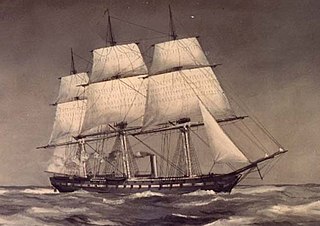
USS Wabash was a steam screw frigate of the United States Navy that served during the American Civil War. She was based on the same plans as Colorado. Post-war she continued to serve her country in European operations and eventually served as a barracks ship in Boston, Massachusetts, and was sold in 1912.
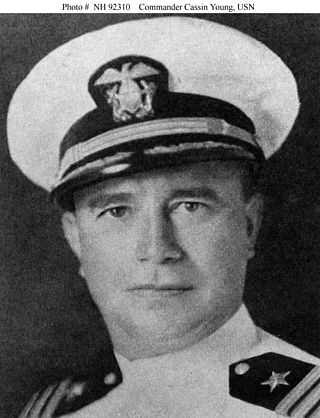
Cassin Young was a captain in the United States Navy who received the Medal of Honor for his heroism during the attack on Pearl Harbor.

George Wallace Melville was a United States Navy officer, engineer and Arctic explorer.
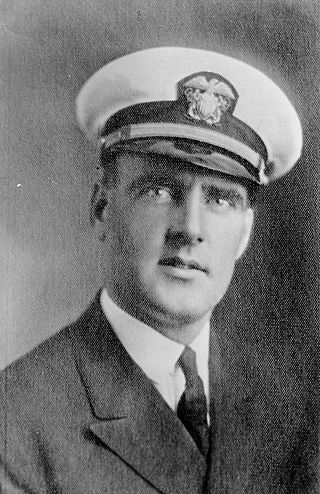
Edwin Joseph Hill, was a United States Navy sailor who was stationed on the USS Nevada (BB-36) during the attack on Pearl Harbor, Hawaii, on December 7, 1941. He posthumously received the Medal of Honor for his actions during the battle.
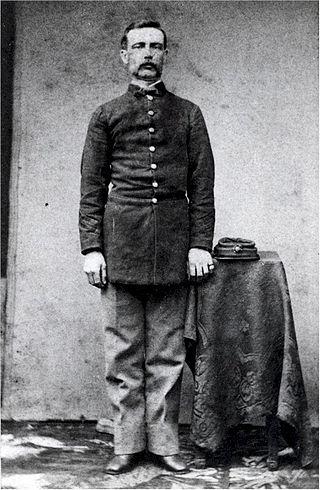
Hugh Purvis was a United States Marine who received the Medal of Honor for actions on board the USS Alaska during the United States 1871 expedition to Korea.
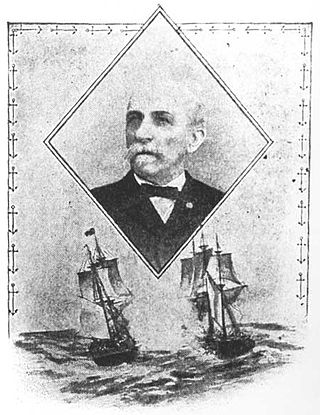
Joseph Ebur Vantine was a United States Navy sailor and a recipient of the United States military's highest decoration—the Medal of Honor—for his actions in the American Civil War.
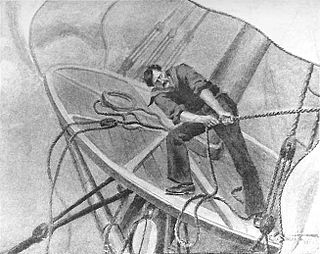
George Willis was a United States Navy sailor and a recipient of the United States military's highest decoration, the Medal of Honor.
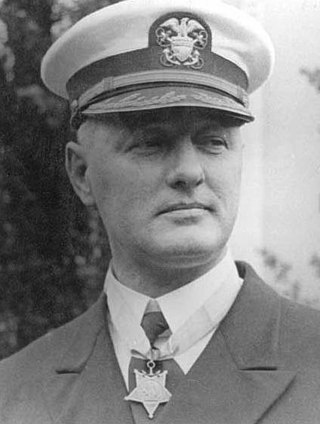
Willis Winter Bradley Jr. was a mid-20th-century American Naval officer, a recipient of the Medal of Honor, Naval Governor of Guam, and a U.S. Representative from California.

The first USS Leyden was a screw steamer that operated as a tug in the U.S. Navy from 1866 to 1903 and saw combat service in the Spanish–American War in 1898.
James Martin II was a native of Ireland who served in the U.S. Marine Corps during the mid-19th century. Rising up through the ranks from private to sergeant while fighting for the federal government of the United States (Union) during the American Civil War, he displayed conspicuous bravery on August 5, 1864, while serving aboard the USS Richmond. Operating one of that ship's guns under heavy enemy fire for two hours during the Battle of Mobile Bay, Alabama, he helped to damage the CSS Tennessee and destroy artillery batteries of the Confederate States Army at Fort Morgan, even as the enemy's shell and shot damaged his ship and killed several of his shipmates. In recognition of his gallantry, he was presented with the Medal of Honor, the United States' highest award for valor, on December 31, 1864.
James Thayer was a United States Navy sailor and a recipient of the United States military's highest decoration, the Medal of Honor.
Henry Williams was a sailor serving in the United States Navy who received the Medal of Honor for bravery.
Antonio Williams was a seaman first class serving in the United States Navy who received the Medal of Honor for bravery.
James Horton was a sailor serving in the United States Navy who received the Medal of Honor for bravery.